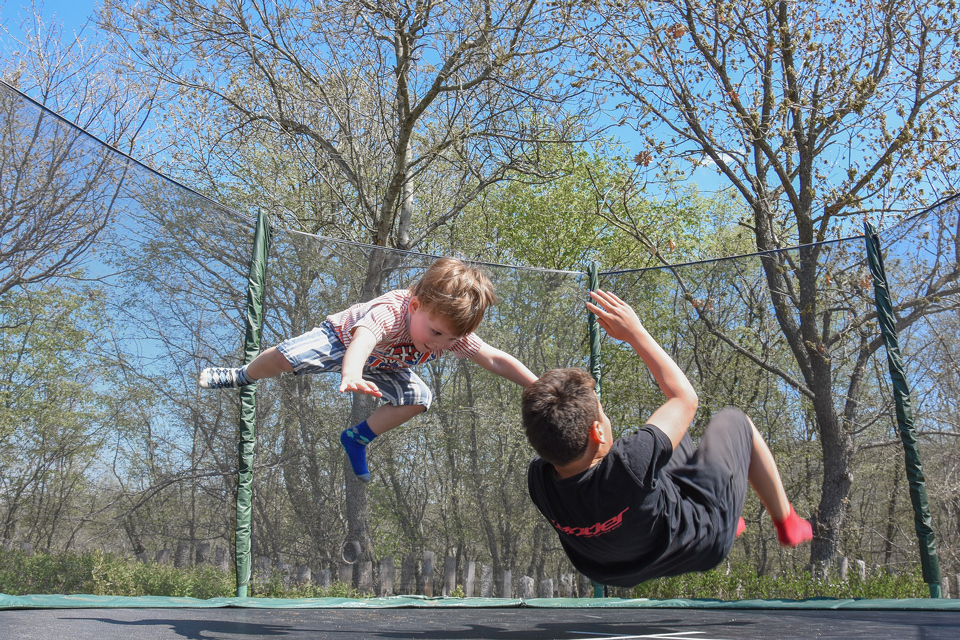Whoa! Your child slides down the sofa, thumps onto the floor and starts rolling around. But you’re exasperated and mentally exhausted trying to keep up with them. Even though the day brimmed full with activities, your youngster with High Learning Potential (HLP) still craves much more to do.
Many HLP children share this trait called overexcitability. They tire less quickly than other children although you’ll have noticed that exhaustion eventually has to come when their inner fireworks fizzle out. Don’t worry, there are ways to channel their excitability so that you can both handle it.
Which Type of Overexcitability?
Any of these descriptions might fit your child:
- Intellectual – a constant desire to learn about topics of interest (e.g. outer space), but their passion is not necessarily understood by their peers.
- Sensory – a heightened awareness for physical things e.g. sound, smell. Your child might love making noise but hate the noise of others (e.g. crowds, a screaming toddler).
- Emotional – a more intense range of feelings and sensitivities.
- Imagination – can be very broad and complex, even for a young child.
- Psychomotor – endless physical energy, for example needs to climb trees, finds it boring to sit at mealtimes, makes unusual sounds on the go.
Movement to Soothe the Mind
Providing movement-based activities can liberate your high-energy child. Going with the need to move will definitely help your child feel calmer. If you have time, consider making a garden sensory trail, which suits all the overexcitability types.
Make an area of your garden tranquil and comforting, and another area stimulation-focussed. Ask your child to help with the planting, signwriting and choice of flowers where appropriate.
For the tranquil area you could use colourful signposting for different plants, try contrasting grasses and herbs, a log to sit on and if you have a sturdy tree, tie on a hammock to encourage restfulness.
- Scent: If you decide to plant flowers, pick ones that are aromatic such as salvia. Rosemary, mint and lavender are perfect too.
- Sound: Nature’s natural sounds are very soothing – try tall plants like bamboo or short tufty plants. Autumn plants such as yellow rattle contain seeds in pods which make a rattling sound.
- Touch: Ask your child about plant texture. Are they hairy, sticky, broad, satiny? On which surfaces do they grow on and under?
- Sight: Are the trees still or swaying? How peaceful or stormy are the clouds today?
For the stimulation area you could create a texture café. Your child could use mud, leaves or coloured beads, shells and cooked spaghetti with old pans and pots for sensory cooking play.
Or add a tub of warm water (for stomping in or playing with), hay to walk on, cheap cushions, fairy lights, a trampoline or even a deckchair.
If there’s bad weather, prompt your child to let off steam indoors – dancing, a mini indoor trampoline or even a simple keep fit routine can help.
Plan for the Occasion
Eating: Before a sit-down meal, get your child channelling their liveliness – suggest jogging on the spot or star jumps to release pent-up energy. During the meal, encourage chat, and if your child has to fidget by moving table objects, offer puzzles instead.
Long journeys: Give your child stationery to draw or write with, use audiobooks or install a film on a seatback player – allotting time per activity. Make the journey as relaxing as you can – plan in some stops so they can run about.
Let them choose an imagination game or play You Choose: Propose choices, for example “If you had to choose between being able to fly or having amazing strength, which would you pick?” or Three Minute Mania: Choose any topic and talk about it for three minutes!
Got a child who can’t resist making musical sounds? If they like to hum then you could consider letting them be a “mini beatbox” or provide music to listen to – give them headphones if it helps (also suits children who are over-sensitive to other noises e.g. motorbikes).
Work with their Learning Style
For young HLP children, the transition to school where many hours are spent sitting can be frustrating. If they bring home their learning projects, see if you can be flexible about where the homework is done. If they can’t wait to read, they might not even bother with the light switch in their eagerness to get started, so make sure that the place is well-lit. If they fidget, how about a wobble cushion or for busy hands, a squishy?
Overexcitable HLP children can be intense but at the same time they have that extra dimension that gives them a great ability to feel, discover and creatively appreciate their world.
To learn more about overexcitability visit our blog Working around Sensory Sensitivities or download our factsheet (free to members) at https://potentialplusuk.org/index.php/product/pa610-hypersensitivity-dabrowskis-overexcitabilities/






